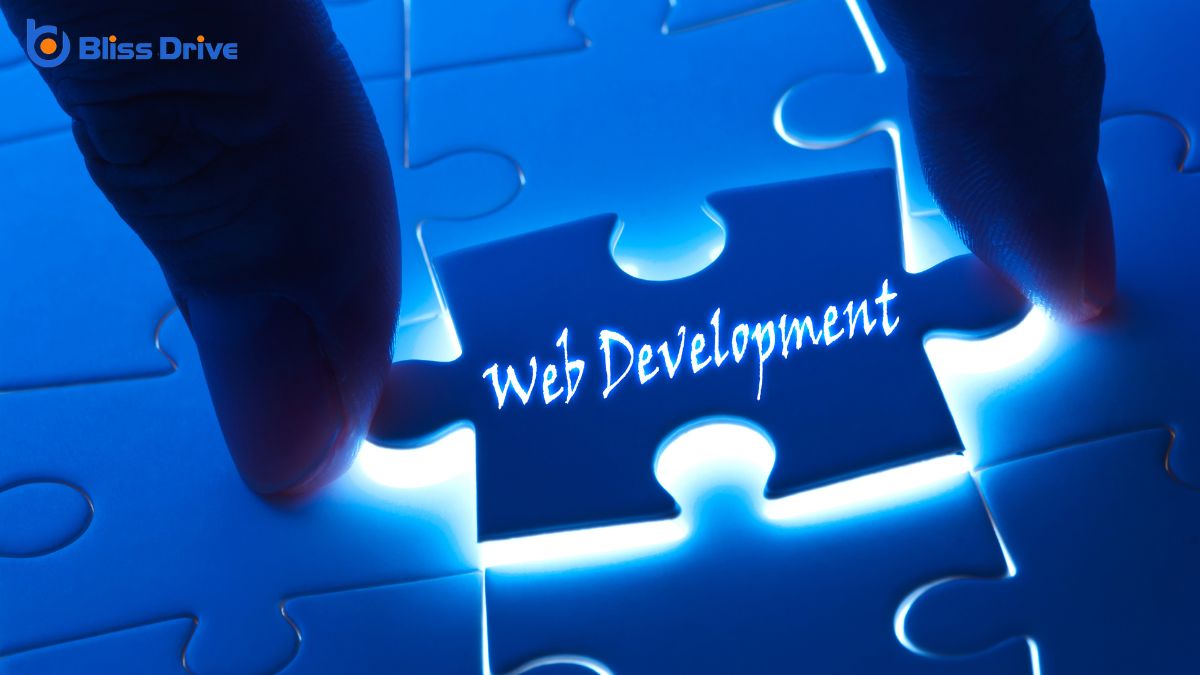Learn More About Us

As we navigate the future of web development, we're witnessing a transformative shift driven by AI, machine learningA subset of artificial intelligence where computers use data to learn and make decisions., and voice interfaces. These technologies offerThe specific product or service being promoted by affiliates. unprecedented personalizationTailoring content and offers to individual users based on their behavior, preferences, or demographi... and accessibility. The democratization through low-code platforms invites more voices into innovation. Blockchain and serverless architectures promise enhanced security and scalability. As user experiences evolve, inclusivity and efficiency are paramount. So, what does this mean for the dynamic online environments we'll soon create?

As we explore the future of web development, it’s impossible to ignore how artificial intelligence (AI) and machine learning (ML) are transforming the landscape. These technologies are rapidly becoming integral to creating more dynamic and personalized web experiences.
We see AI-driven tools that automate coding processes, making development faster and more efficient. ML algorithms analyze user data to deliver content tailored to individual preferences, enhancing engagement.
For developers, this means embracing new skills and tools to stay competitive. We must learn to integrate AI-driven solutions into our projects, from chatbotsAutomated programs that simulate human conversation to assist customers and improve their shopping e... providing instant customer supportServices provided to assist customers before, during, and after a purchase to ensure a positive expe... to AI-assisted design tools that optimize layouts.
While technology continues to advance, our focus should remain on enhancing user experience and accessibility in web development.
As developers, we must guarantee our websites aren't only visually appealing but also universally accessible.
Let's explore key areas to focus on:
Progressive Web Apps (PWAs) revolutionize our approach to web development by merging the best features of websites and mobile apps. They offer a seamless user experience, loading quickly and operating offline like native apps. Users appreciate that PWAs don't require downloads from app stores, saving time and storage space.
As developers, we benefit from the simplicity of maintaining a single codebase while reaching users across various devices. PWAs also enhance user engagementThe level of interaction and involvement users have with social media content. through push notificationsShort messages sent directly to users’ mobile devices from apps to encourage engagement., creating opportunities for us to interact with our audience effectively.
Additionally, their responsive design guarantees compatibility with different screen sizes, enhancing accessibility.
With the rapid advancement of technology, voice searchUsing voice commands to search the internet or perform actions on a mobile device. and conversational interfaces are becoming essential in shaping the future of web development.
As we embrace these innovations, we must understand their transformative potential. Here’s how they’re making an impact:
As technology continues to evolve, augmented reality (AR)Technology that overlays digital information on the real world through a mobile device. and virtual reality (VR)An immersive technology that allows users to experience and interact with a simulated environment. are breaking new ground in web development, offering immersive experiences that were once the domain of science fiction.
We’re now able to overlay digital information onto the real world or create entirely virtual environments, enriching how we interact with web content. This shift isn’t just about novelty; it’s reshaping industries like retail, education, and entertainment by providing users with engaging, interactive experiences.
In retail, for instance, AR allows customers to try products virtually before purchasing.
In education, VR can transport students to historical events or distant planets.
As developers, we must embrace these tools, learning how to integrate them effectively into our designs to stay relevant and innovative.
Blockchain technology is revolutionizing web development by offering unprecedented security, transparency, and decentralization.
As developers, we're witnessing a transformation in how data is handled and transactions are conducted online.
Let's explore how blockchain influences web development:
These elements are reshaping our approach to web development, fostering a more secure and efficient digital world.
As we explore the shift towards serverless architectures, let's consider both the benefits and challenges this technology presents.
Serverless solutions offer scalability and reduced operational costs, making them an attractive option for modern web development.
However, we must also address the hurdles in adoption, such as vendor lock-in and debugging complexities, to fully leverage their potential.
Serverless technologies are transforming the landscape of web development by offering numerous advantages that streamline operations and reduce costs.
As we explore these benefits, we see how they empower us to focus on innovation rather than infrastructure management.
These factors collectively redefine how we approach web development projects.
Embracing serverless architectures brings several challenges that we must navigate to fully leverage their potential.
First, there's the issue of vendor lock-in. When we rely heavily on a specific provider's services, switching can become complex and costly. We must carefully assess providers to avoid being stuck with one that doesn't meet our evolving needs.
Additionally, debugging and monitoring in a serverless environment demand new tools and skills. Traditional methods often don’t translate well, requiring us to adapt.
Moreover, serverless architectures can introduce latency issues, especially if managed poorly. We need to optimize functions and data flow to minimize delays.
Finally, cost estimation is tricky. While serverless promises cost-effectiveness, unexpected usage spikes can escalate costs quickly. Balancing these factors is vital for successful adoption.
When we consider the next frontier in web development, quantum computing stands out as a transformative force. It promises to revolutionize how we process information, offering unparalleled computational power.
As web developers, we must understand the potential impact and prepare for the changes it might bring. Let’s explore some key promises of quantum computing in web development:

Let's explore how low-code and no-code platforms are transforming web development by simplifying processes and expanding accessibility for everyone.
These platforms empower more people to bring their ideas to life, regardless of their technical expertise, fostering inclusivity in the tech world.
As we embrace these tools, we can accelerate project timelines and focus on innovation rather than getting bogged down in complex coding.
In recent years, there's been a considerable shift in web development toward simplifying processes through the use of low-code and no-code platforms.
These tools empower us to create functional applications without extensive coding knowledge, making development more accessible and efficient.
Here’s how they simplify our work:
As we embrace the efficiency brought by low-code and no-code platforms, we also witness a remarkable expansion in accessibility and inclusivity within web development.
These tools empower individuals without extensive coding knowledge to create functional, sophisticated websites and applications. By lowering the technical barriers, we open the doors to a more diverse group of creators, fostering innovation and fresh perspectives.
Incorporating these platforms means we can focus more on creative problem-solving and user experience rather than getting bogged down by complex coding.
This shift offers opportunities for those traditionally excluded from tech roles to participate and contribute meaningfully. As more voices join the conversation, we build a web that’s more reflective of the diverse world we live in, enhancing its relevance and reach.
While traditional coding methods often stretch project timelines, low-code and no-code development platforms are rapidly changing the landscape.
These tools empower us to build applications faster and more efficiently. By reducing the need for extensive coding knowledge, we can focus on what truly matters: delivering value.
Let's explore why these platforms accelerate project timelines:
These platforms are revolutionizing how we approach web development, making it more accessible and efficient.
As we look ahead, we're excited about the transformative potential of web development. AI and machine learning will personalize our experiences, while low-code platforms invite everyone to innovate. Blockchain guarantees our data's security, and serverless architectures promise efficiency. Progressive web apps, voice interfaces, and augmented realities will redefine how we interact online. Together, let's embrace these changes, driving inclusivity and creativity in crafting dynamic, future-ready digital spaces. The future's bright, and it's ours to shape.
